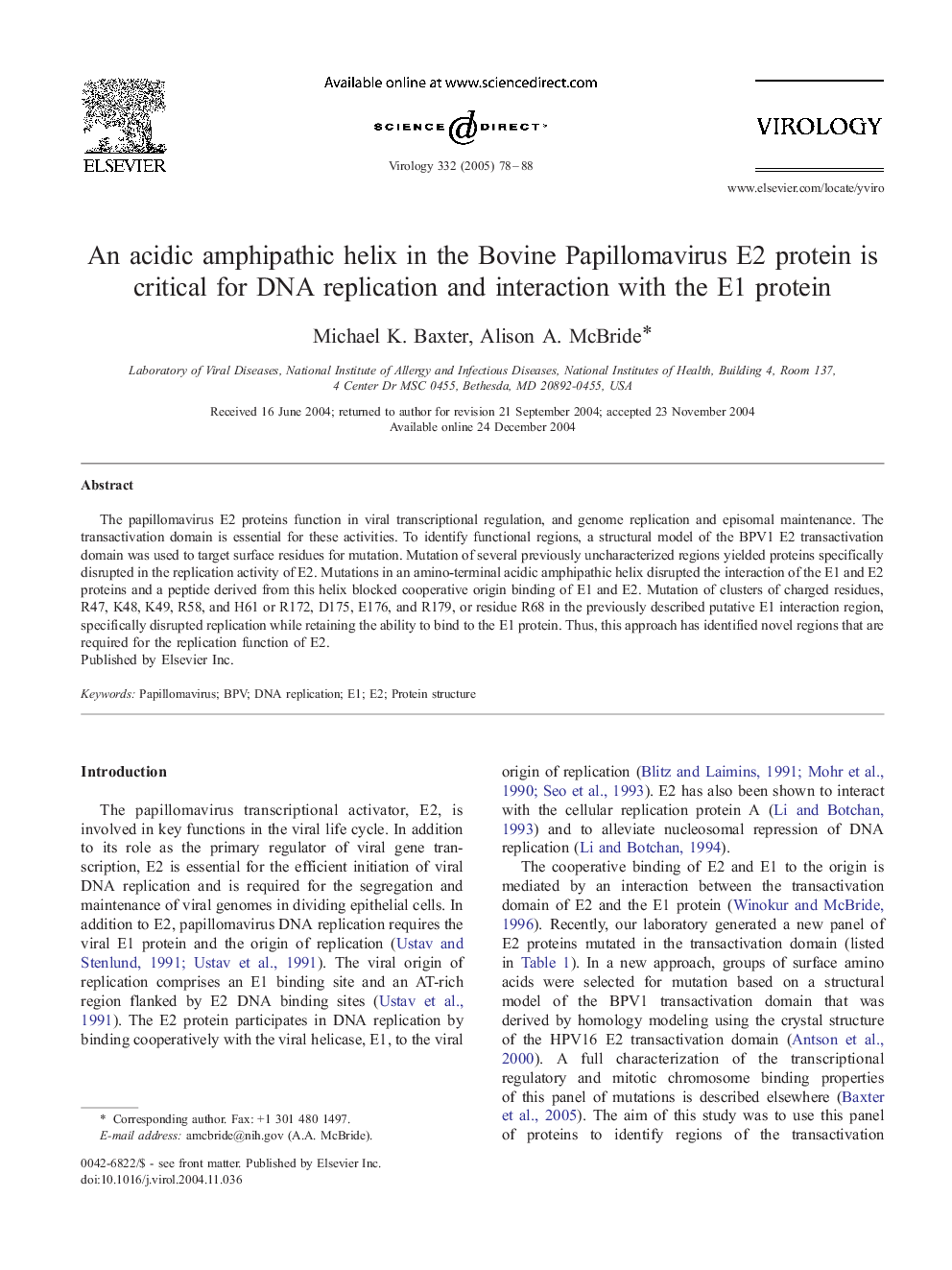| Article ID | Journal | Published Year | Pages | File Type |
|---|---|---|---|---|
| 9287113 | Virology | 2005 | 11 Pages |
Abstract
The papillomavirus E2 proteins function in viral transcriptional regulation, and genome replication and episomal maintenance. The transactivation domain is essential for these activities. To identify functional regions, a structural model of the BPV1 E2 transactivation domain was used to target surface residues for mutation. Mutation of several previously uncharacterized regions yielded proteins specifically disrupted in the replication activity of E2. Mutations in an amino-terminal acidic amphipathic helix disrupted the interaction of the E1 and E2 proteins and a peptide derived from this helix blocked cooperative origin binding of E1 and E2. Mutation of clusters of charged residues, R47, K48, K49, R58, and H61 or R172, D175, E176, and R179, or residue R68 in the previously described putative E1 interaction region, specifically disrupted replication while retaining the ability to bind to the E1 protein. Thus, this approach has identified novel regions that are required for the replication function of E2.
Related Topics
Life Sciences
Immunology and Microbiology
Virology
Authors
Michael K. Baxter, Alison A. McBride,
